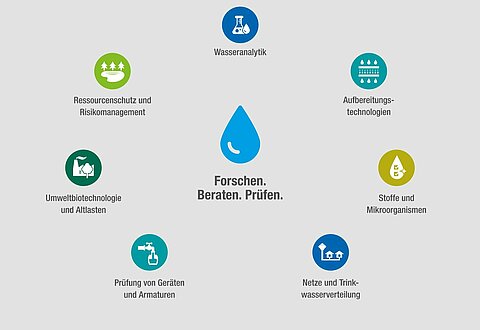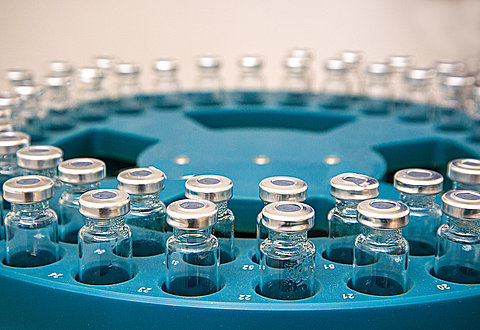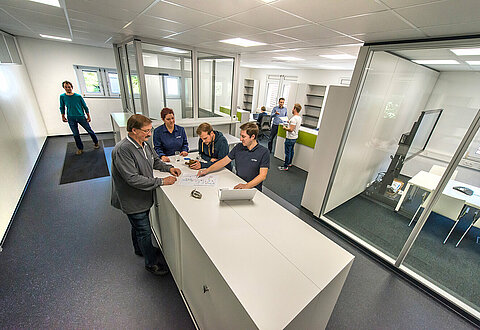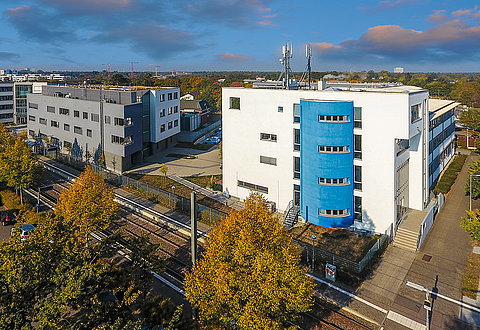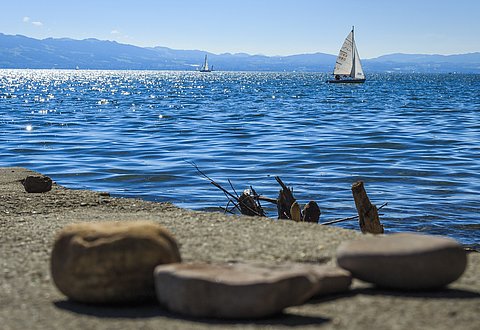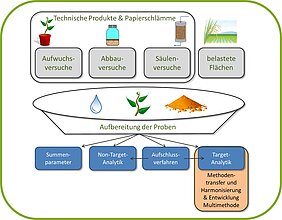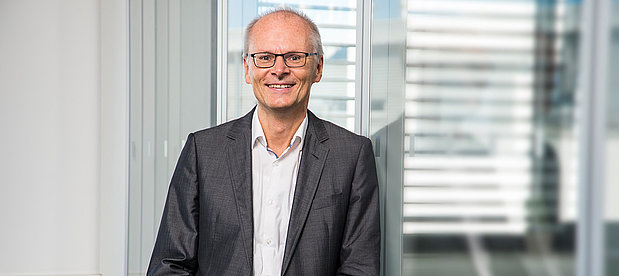The aim of the project was to identify the sources and the extent of contamination with per- and polyfluoroalkyl substances (PFAS) in polluted areas in the Rastatt/Baden-Baden and Mannheim region.
More than 1000 ha of soil and groundwater in the Rastatt/Baden-Baden region are contaminated by PFAS. In order to identify the sources of contamination and to predict the future development of contamination levels of groundwater and agricultural products, experiments with sludge from paper making industry that was spiked with three different paper additives were performed. The technical products used were based either on perfluorinated alkylphosphates (PAP), perfluorinated polyacrylates or perfluorinated polyethers.
Although the source of PFAS contamination could not be elucidated unequivocally, the results of the FluorTECH project give clear indications that PAP based paper additives play a major role when explaining the PFAS contamination observed today. Microcosm studies as well as column experiments, batch experiments on photo-oxidation and electrochemical transformation and finally growth experiments with lettuce and summer wheat gave clear evidence that contamination of soil with PAP containing technical products lead to a release of perfluorinated carbonic acids and to a transfer into groundwater and agricultural products. This was further confirmed by a comparison of the contamination profiles of soil samples from the contaminated area and water-proofed papers by non-target analysis.
However, not only PAP containing technical products lead to a release and a transfer of perfluorinated carbonic acids but also for paper additives containing perfluorinated polyacrylats such an effect was observed. The transformation is much slower than for PAP containing products but cannot be completely neglected.


![[Translate to English:] Prüfstelle-Produktprüfung_Teststand Test centre and product testing](/fileadmin/_processed_/0/9/csm_TZW-Karlsruhe_Pruefung_Geraete-Teststand_444204ae51.jpg)
















